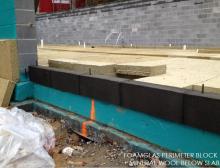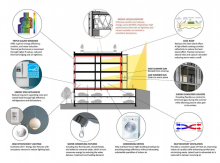Multifamily
Multifamily Passive Buildings: Evaluation of Measured Performance
Permanently Passive: Building With AAC
NYSERDA - Transforming the clean energy landscape in commercial and multifamily buildings
Join NYSERDA to learn about its Clean Energy Fund initiatives for the multifamily and commercial building industry. This session will highlight current and upcoming programs to help overcome barriers to energy efficiency in commercial and multifamily buildings.
Biomass Design and Potential
This course touches on some of the considerations one should make when designing and planing an automated biomass heating system. It will cover fuel choice and logistical advantages, equipment availability and pros and cons of different choices, sizing for financial viability, and emissions implications of fuels, moisture content and combustion equipment. We will also take a quick look into the near future and discuss a few up-and-coming cogeneration options.
Living Building Challenge: Historic Building, Modern Lessons
The Living Building Challenge (LBC) can be applied to any building project, including historic renovation and new construction. Charley Stevenson and John Rahill will compare and contrast the LBC renovation of an 18th century plank building to the design and construction of several new LBC buildings. By examining the three most challenging petals (water, energy and materials) they will illuminate the benefits of and the obstacles to LBC compliance.
Foam-Free - Fabulous, Feasible, and Fun!
Three experienced practitioners will demonstrate that we needn’t (shouldn’t?) be captive to foam in the high performance building industry by showing practical solutions that eliminate foam in new and retrofit applications – above and below grade. Using real projects and assemblies, the speakers will discuss an integrated design build process, review the implementation of details and sequencing and the verification and commissioning of alternative construction methods. Without dwelling on the negative environmental impacts of foam insulations, alternative, safer insulation materials will



